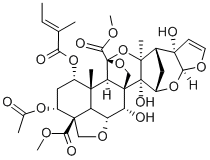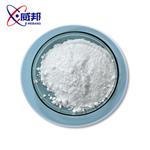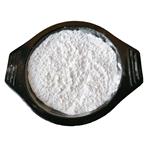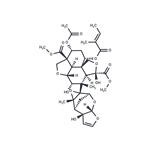Description
Kernel extracts from the Indian neem tree (Azadirachta
indica) have insecticidal and insect-repellent properties.
The key active ingredient is azadirachtin, a nortriterpenoid
that exhibits insect growth regulator effects but
no adulticidal activity.
Chemical Properties
Off-white, yellowish powder or dark brown
emulsifiable concentrate.
Uses
Azadirachtin is a tetranortriterpinoid isolated from the seeds of the neem tree. Highly active insect feeding deterrent and growth regulator.It is used experimentally as insect control agent.
Uses
Azadiractin is extracted from the neem tree (Azadirachta indica). It
is the principal active ingredient of extracts of neem. Neem extracts and
pure azadirachtin are used to control whitefly, leaf miners and other pests
including pear psylla.
Definition
ChEBI: A member of the family of azadirachtins that is isolated from the neem tree (Azadirachta indica).
Agricultural Uses
Insecticides, Nematicide: Azadirachtin is an extract of fruit from the Neem tree,
which is largely grown in India. It is used as a commercial
insect growth regulator that controls the metamorphosis
process as the insect passes from the larva stage to the pupa
stage. The Neem tree also yields extracts from its bark,
leaves and wood that are used in medicine and cosmetics.
Trade name
ALIGN®; AZATIN EC®; AZATIN®-XL
PLUS; AZATROL EC®; AMAZIN® ECOZIN® EI-
783®; MARGOSAN-O®; NEEM®; NEEMAZAL®;
ORNAZIN® SALANNIN®; SUPERNEEM®;
TURPLEX®
Biochem/physiol Actions
Triterpenoid found in need tree seeds, azadiractin suppresses feeding by many insect species and disrupts growth of most insect and other arthropod species, while having very low mammalian toxicity. Promising as a natural pesticide.
Potential Exposure
Biological tetranortriterpinoid insecticide;
insect growth regulator. A natural product extracted
from seeds of the Neem tree (Azadirachta indica).
Metabolic pathway
The natural insecticide azadirachtin is most stable in
mildly acidic solutions between pH 4 and 6 at room
temperature and unstable in alkaline and strong acidic
conditions. While azadirachtin is relatively stable to
heating in the seeds or as a pure solid, it is rapidly
destroyed or altered by heating in aqueous solution
and methanol. In methanol at 90°C, it is quantitatively
converted to 3-acetyl-1-tigloylazadirachtinin.
Shipping
UN3077 Environmentally hazardous substances,
solid, n.o.s., Hazard class: 9; Labels: 9-Miscellaneous hazardous
material, Technical Name Required.
Degradation
After 90 hours exposure to UV radiation, very little azadirachtin (l)its 3-
acetyl derivative and 22,23-dihydroazadirachtin remained intact. However,
these compounds retained biological activity, and at least 200 hours
irradiation was necessary to reduce the biological activity of 1. It is suggested
that the effect of ultraviolet radiation is confined to the tigloyl
residue which is common to these three compounds and which may
undergo cis-trans isomerisation, rearrangement, etc. without significant
effect on the biological activity of the molecule, because reduction or
removal of the tigloyl residue causes only limited reduction in biological
activity of the parent (Barnby ef al., 1989).
Azadirachtin was hydrolysed readily in several buffers (pH 4.1-8.1)
and natural waters (pH 6.2,7.3,8.0 and 8.1) at 35 °C and its disappearance
followed pseudo-first-order kinetics (Szeto and Wan, 1996). Rates of
disappearance of the parent were faster in basic than in acidic solution
(DT
50 was 12 hours at pH 8 and 206 hours at pH 6) and the compound is
not expected to be persistent in water.
Mode of action
Azadirachtin acts on insect gustatory receptors to inhibit feeding, and also interferes with development by inhibiting synthesis of the neuropeptide that triggers ecdysone release. The molecular targets mediating these effects are not known.
Toxicity evaluation
Azadirachtin is practically non-toxic to mammals, birds and plants. It is moderately toxic to aquatic invertebrates, but exposure is negligible due to low application rates and rapid degradation. Since it is only active by ingestion of treated foliage, exposure of non-target insects and honeybees is minimal.
Incompatibilities
Powder or liquid may form explosive
mixture with air. Incompatible with oxidizers (chlorates,
nitrates, peroxides, permanganates, perchlorates, chlorine,
bromine, fluorine, etc.); contact may cause fires or explosions.
Keep away from alkaline materials, strong bases,
strong acids, oxoacids, epoxides, reducing agents and
metals, acid chlorides, alkalis, alkali metals, high heat,
including sunlight.
Waste Disposal
Waste product may be disposed
of onsite (open dumping may be prohibited) or at an
approved waste disposal facility. All federal, state, and
local environmental regulations must be observed.





